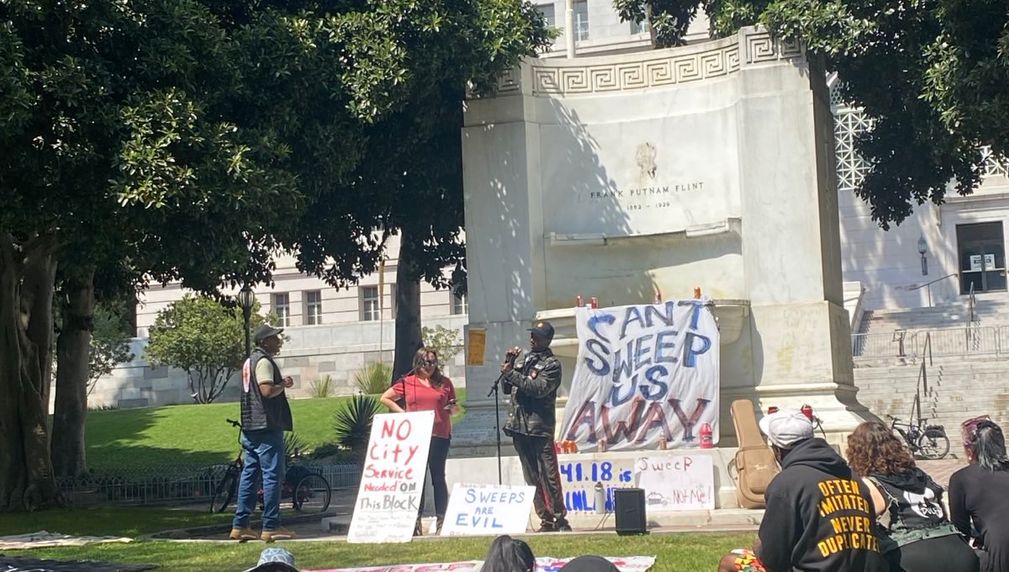Supporting Self-Advocacy to Break the Homelessness Cycle
When people facing homelessness are receiving case management and interim housing, they’re often left to navigate the system on their own. In the majority of cases, they never make it to being permanently housed. With our toolkit, people facing homelessness will have the tools they need to advocate for themselves through this convoluted system and have agency in the service pipeline to attain permanent housing.

What is the primary issue area that your application will impact?
Affordable housing and homelessness
In what stage of innovation is this project, program, or initiative?
Pilot or new project, program, or initiative (testing or implementing a new idea)
What is your understanding of the issue that you are seeking to address?
One of POWER’s members was a Project Roomkey participant who was moved into interim housing while she waited for her housing voucher. Over the two years she waited, she was awarded a voucher, but was never told. Her voucher subsequently expired. Without assistance from our employee, who took the issue to the Mayor’s office, it’s without a doubt our member would have ended up living on the street again. There are thousands of stories like this one, which unfortunately end with people becoming homeless again. This cycle occurs because navigating the myriad of LA’s housing services is an overwhelming task, and one unhoused people frequently undertake alone. While programs like Inside Safe boast temporarily housing thousands of people, those numbers dwindle when it comes to permanently housing people. If we do not plug the substantial gap in the service provision industry with specialized tenant navigation support, we will continue to lose our battle to end homelessness through attrition.
Describe the project, program, or initiative this grant will support to address the issue.
POWER will create an online and printed toolkit that explains how to be a self-advocate while navigating the complexity of LA’s housing system. The toolkit will include resources on vouchers and recertification, subsidies and how they work, and how to get questions answered when case managers can’t answer. Vitally, this toolkit will provide information that is not readily available to those navigating the housing system, and prepare users to advocate for their rights and know what to do when conflicts arise. There is a severe shortage of case managers who are well-trained and not deeply over capacity, so putting the power in the hands of tenants will ensure that they have the ability to pursue more successful outcomes in their participation in government and non-profit housing programs. Our project has three components: 1. Compiling resources and building the toolkit, with special attention to accessibility. 2. An outreach and education campaign about the availability of this tool and how to use it. This will be conducted through door-to-door canvassing, social media, and community and governmental partnerships. 3. The final component of this project will entail gathering feedback from users and workshop participants to discover any gaps in the toolkit, which will then be addressed. Ultimately, this toolkit and outreach campaign will increase the number of people who stay housed after moving in from the streets.
Describe how Los Angeles County will be different if your work is successful.
This project will plug gaps in the homelessness services pipeline by keeping people in housing once they are housed. The Inside Safe program has brought over 2,000 individuals inside, but has secured permanent housing for around 400 (although those numbers have recently been disputed). It is clear that despite money and energy being devoted to solving homelessness, there is a missing piece in the process that results in people cycling in and out of interim housing. With our toolkit, we will address how to navigate City and County housing services, so the information will be applicable to the entire County unhoused population of over 70,000 individuals. Empowering unhoused folks with the information needed to be their own advocates will result in them being able to independently navigate these systems with more success, retaining their housing. Our project will help folks stay off the streets, which will maximize the impact of our investments into homelessness programming and services.
What evidence do you have that this project, program, or initiative is or will be successful, and how will you define and measure success?
Due to its digital nature, we will be able to track the metrics of the toolkit site, including site visitors, time spent on the site, and clicks to the site. We will also keep a record of the number of people we interact with at doors and the number of workshop participants, as in-person contact will be vital to the project. Out of the people we interact with personally, we will track who was able to gain or regain housing. Near the end of the grant period, we will survey participants to see how the toolkit was helpful and what is missing so we can continue to improve the resources available for folks navigating these systems, making sure it is as accessible and effective as possible.
Approximately how many people will be impacted by this project, program, or initiative?
Direct Impact: 1,000.0
Indirect Impact: 70,000.0